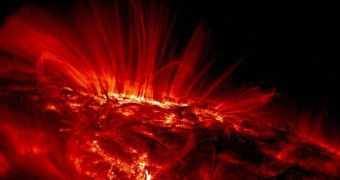Our Sun seems to have entered a very calm period, seeing how none of its usual solar flares, storms, or spots have been noticed for quite some time. While the fact that our satellites and power grids are no longer threatened by the Sun may seem like a good thing, the matter is “shady” at best, because now astrophysicists have no way of knowing when the star's activity will intensify. If we are caught off-guard, or if it “decides” to generate these events on a larger scale than usual, then the damage to our infrastructure may be severe.
It's common knowledge that the Sun undergoes an 11-year-long cycle, but it would seem that lately it hasn't been keeping its schedule updated. Some 266 days in 2008 went by without a single spot appearing on the star, which accounted for 73 percent of the entire year. In 2009, out of the 90 days that have passed, 78 have been without spots (97 percent). Such a reduced activity has astronomers thinking, because we are nearing the point of the lowest-ever-recorded statistics on solar activity. These data can be traced back to 1913, when the Sun lit without a spot for 311 days, Space reports.
“We're experiencing a very deep solar minimum,” Dean Pesnell, who is a solar physicist at the Goddard Space Flight Center, shares. “This is the quietest sun we've seen in almost a century. Since the Space Age began in the 1950s, solar activity has been generally high. Five of the ten most intense solar cycles on record have occurred in the last 50 years. We're just not used to this kind of deep calm,” Marshall Space Flight Center sunspot expert David Hathaway adds.
It's important for scientists to be prepared when the next solar maximum hits. And while an intensification in solar activity is only expected to take place three to four years from now, the “silence” we are experiencing at this point is suspiciously calm.
During high-intensity solar storms, super-charged particles slam into our atmosphere, driven at very high speeds from the Sun. Although our magnetosphere is perfectly capable of deflecting most of them, those that get through can cause havoc in communication, power grids and satellites, basically in everything operating on electricity.

 14 DAY TRIAL //
14 DAY TRIAL //